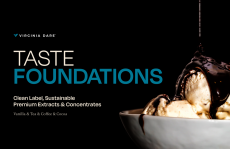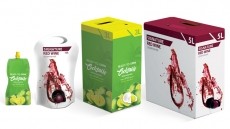New Purac product cuts acrylamide formation
Acrylamide is a suspected carcinogen that is formed during by heat-induced reaction between sugar and an amino acid called asparagine.
Known as the Maillard reaction, this process is responsible for the brown colour and tasty flavour of baked, fried and toasted foods.
The food industry has been exploring ways to reduce or eliminate the formation of acrylamide and Purac said it developed its new product called Puracal Act, which is based on calcium lactate, to address this issue.
Acrylamide-rich foods include French fries, coffee, biscuits, cereal, potato chips, potatoes, and baked goods.
Puracal Act has been especially designed for the potato chip and French fries industries as well as extruded snacks.
It adds to the Netherlands-based company’s existing Puracal product line, which also helps reduce acrylamide, but Hein Hamelijnck, Purac director of sales for food, told FoodNavigator.com that it is “much more effective than normal Puracal”.
He said: “It was developed with acrylamide in mind.
“We saw an interest in one of our products for that and we looked if we could improve it.”
Purac, which is a subsidiary of the bakery supplies and food ingredients firm CSM, produces lactic acid and lactates and is a supplier of gluconates.
In 2007 it launched calcium salts to cut acrylamide. This was part of an overall change in strategy direction to offer concepts that provide solutions to its customers’ formulation needs and problems.
Reducing acrylamide levels without reducing quality is a considerable challenge, according to Purac, especially for starchy products that have been deep-fried, roasted or baked at high temperatures, such as extruded snacks and potato chips.
However, it claims that the calcium in Puracal Act interferes with the reaction between asparagine and reducing sugars, which is the key step in the formation of acrylamide.
It is also said to lower brown colouring during frying and improve firmness and crispiness.
Inge Evers, a senior application technologist at Purac, added: “Puracal Act allows more flexibility in the production process because it does not require extra time or special temperatures to be effective.
“Typical variations in pH or moisture content in the snack process will not affect the performance of Puracal Act in acrylamide reduction.”
Health concerns
A study from the National Food Institute, the Technical University of Denmark and the Danish Cancer Society reported in 2008 that the compound may increase the risk of breast cancer in post-menopausal women.
However, despite being a carcinogen in the laboratory, many epidemiological studies have reported that everyday exposure to acrylamide in food is too low to be of concern.
Also, a new study from Harvard published in the American Journal of Epidemiology found that acrylamide intake, at levels commonly consumed in the US diet, had no impact on the risk of pre-menopausal breast cancer.
Approaches already used by the food industry to help reduce acrylamide levels include converting asparagine into an impotent form using an enzyme, binding asparagine to make it inaccessible, adding amino acids, changing the pH to alter the reaction products, cutting heating temperatures and times, and removing compounds from the recipe that may promote acrylamide formation.













